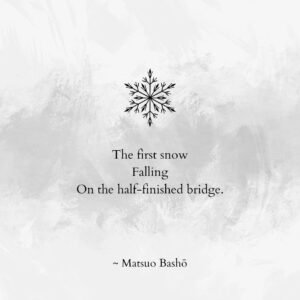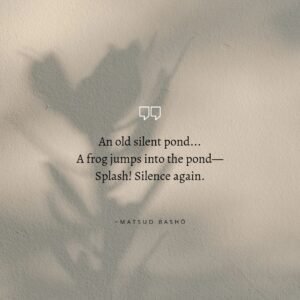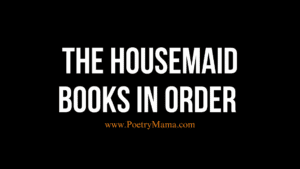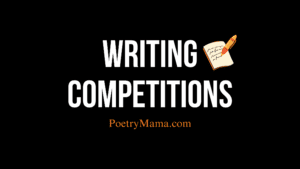Poetry, in itself, is one of the most artistic ways of expression that ranges from rhyme to free verse, from sonnets to songs and among them, one of the most intriguing one is Haiku. So, it’s time to dive in and learn how to write Haiku in 2025.
The Haiku, a poetic form originating in Japan, is characterized by its brevity and focus on nature. Unlike other poetic structures, such as those with a fixed number of lines or syllables, Haiku adheres to its own set of rules and conventions. Despite these variations, the essence of Haiku lies in its ability to capture fleeting moments in nature within the walls of simplicity.
In previous eras, Haiku was regarded as a tradition unique to Japanese culture and history. However, in contemporary times, it has proliferated globally and is classified as contemporary literature.
In addition to Japanese Haiku, numerous poets are composing Haiku in English and other languages, thus expanding its scope beyond Japanese culture.
How to write Haiku, may not seem easier to learn but if you follow all the steps, it should be like a child’s play.
- Origin: 13th Century Japan
- By: Masaoka Shiki
- As: beginning of a longer poem called Renga
TO ALWAYS STAY UPDATED WITH POETRYMAMA, FOLLOW US ON OUR INSTAGRAM HANDLE:
How Many Lines In Haiku?
Traditional Haiku consists of a 5-7-5 pattern to create rhythm with each syllable used in it.
Most traditional forms of Haiku consist of 3 lines with the following body:
- First Line ( 5 syllables) : Poet introduces the subject of the poem. The beginning should be attractive and attention seeking and can also be perceived as the starting of the story line. There should be balance in between the rhythm of the syllables.
- Second Line ( 7 syllables) : This line usually serves as the main plot giving depth, drama, contrast, colour and perspective to the Haiku. It’s considered as the soul of the poem.
- Third Line ( 5 syllables) : The last line has the purpose to conclude the storyline. The ending can be dramatic, contrast, smooth or a cycle back to the beginning scenario. Traditionally, the Haiku endings are calm scenes and the epitome of tranquility.

At times, writers confuse syllables with English letters. Syllable means a single short sound in a word that consists of a vowel alone or in combination with consonants. It adds rhythm and meter to the poem.
A writer can count syllables by counting the beats or individual parts in a given word. Some of the common ways to count syllables are:
- 1. Clapping Method
- 2. Breaking down word
- 3. Hand under chin method
Why 5-7-5 syllable pattern in Haiku?
A Haiku traditionally has 17 syllables in its structure based on the original Japanese version, which is distributed across 3 lines with 5-7-5 syllables, respectively.
This Japanese structure has been followed when writing Haiku in English as well. However, the modern form of Haiku has seen a bending of this rule to maintain the flow and rhythm of the poem.
In modern art of writing Haiku, the 5-7-5 syllable pattern can be changed by either adding or removing syllables, which might create patterns such as 5-8-5, 5-7-6 or more. These variations are still acceptable and recognized as Haiku due to the differences between English and Japanese syllables.
For beginners, it’s suggested to start with a 5-7-5 syllable Haiku and gradually diversify their work to successfully be able to write Haiku in 2025.
Should Haiku Always Rhyme?
Haiku traditionally doesn’t emphasize rhyme. Instead of focusing on rhyming, Haiku pays more attention to presenting contrasting ideas or objects within a single poem, which are often separated by a cutting word. Some of the most famous Haiku did not rhyme. More focus was placed on syllable count and the depth of the poem.
But if a poet wants to add rhyme to a Haiku, there’s no hard and fast rule against it. A poet can add rhyme to enhance the strength of a Haiku.
Can Haiku Have Title?

While a Haiku as a whole does not need a title, providing one can offer more context and depth to the reader, which enhances the essence of haiku writing. All in all, adding a Title is not forbidden and can be the icing on the cake.
Traditional Japanese Haiku had no titles or the concept of ‘heading.’ In modern times, especially in the English-speaking Community, a title has become a part of the writing process. Based on this, poets often add a title to their Haiku when writing in English.
Grammar And Punctuations in Haiku

As far as punctuations are concerned in Haiku writing, a minimalistic approach is appreciated and promoted, as the basic core of Haiku revolves around simplicity and clarity of thought. This does not mean punctuation cannot be used. Dashes, ellipses, or cutting words are the most preferred options, but their use should highly emphasize the flow of words instead of grammatical correctness.
The optimal suggestion being, the less punctuations, the better.While writing in English, a Haiku should be grammatically correct to avoid messing up its interpretation.
Besides that, the poet has the license of poetic freedom to insert creativity into the Haiku to enhance visualization and sensation in the Haiku.
What Themes Can A Haiku Have?
Traditionally, Haiku revolves around themes like nature, seasons, weather, and natural elements such as earth, wind, and water.
Modern Haiku, however, can encompass a wider variety of themes and do not necessarily require a specific focus on nature.
Within the writing community, Haiku that evokes a sense of calmness and incorporates natural elements are still often highly valued.
Nowadays, Haiku can be funny and hilarious, even rhyming or not. It depends on the magazine/ publication what kind of Haiku they are looking for specifically but a writer can explore a wide range of themes. A variety of themes are more likely to enhance poet’s grasp over Haiku writing and will help to learn, how to write Haiku.
SOME OF THE BEST HAIKU TOPICS ARE:
- Nature
- Seasons
- World and it’s contradictions
- Holidays
- Animals and birds
- Art
- Feelings and Emotions
- Dreams and imagination
- Fantasy
- Humour
- Places and Travel
- Mythologies
- Stages of life
- Philosophy
- Society
- Abstract
- Timeline including Future, Past, History and more.
- Global issues
- Poetry
- Specific moment
What Is The Difference Between Haiku and Tanka?

Haiku and Tanka, both are traditional forms of Japanese poetry but differ from each other in terms of structure, length and nature of the poem.
- Structure and Length: Haiku consists of 5-7-5 syllable structure bounded within 3 lines of poetry whereas Tanka has a 5-7-5-7-7 syllable structure, making it a poem of 5 lines.
- Syllable: Haiku has 17 syllables within it whereas Tanka is a longer poetry version with 31 syllables.
- Theme: Haiku revolves around nature and its elements and usually uses a Kigo word (seasonal word). Tanka has no thematic bindings and can explore a larger group of topics like human nature and emotional, thoughts and more. Tanka also showcases a twist of plot in its 3rd line to create a melodramatic effect.
- Style: Haiku has a more serene and tranquil effect on the reader with a continuous calm tone and reassuring nature. Tanka on the other hand has more of a subjective approach, highlighting the intensity of the poet’s emotions and ideas.
- Literary Devices: Haiku uses Kireji which is a cutting word which creates a dramatic change in the poetry. Tanka has no such cutting word and can use similes, metaphors, imagery and more. It’s 7 line structure provides more space for elaboration and detail.
What’s The Difference Between Haiku, Haiga and Haibun?

Haiga can be best described as ‘a Haiku with a painting.‘ It is a form of art where the Haiku is crafted based on a painting, or vice versa, with both creative pieces complementing each other.
Knowing such differences before jumping into poetry helps poets to have a better perception of how to write Haiku.
- Origin: both developed in Japan but Haiga is a creative outlet for Haiku.
- Appeal: while Haiku has readers in its grip, Haiga further attracts artists towards poetry and branches a bridge between poetry and art.
- Structure: Haiga may/may not follow 5-7-5 syllable rule as more focus is towards its complementing the painting and therefore Haiku structure can be altered to some extent.
On the contrary, Haibun is a Haiku which comes alongside prose. The prose can act as an introductory narrative, a conclusive narrative following after the Haiku or can be a part of Haiku by interspersing it.
It allows the poet to deliver more depth, detail and elaboration in the story while maintaining the decorum and simplicity of the Haiku itself.
EXAMPLE: By Matsuo Bashō
Prose: The summer rain falls incessantly, soaking the earth and creating a tranquil atmosphere.
Haiku:
Wet leaves—
A crow cries—
Autumn wind.
What’s the Difference Between Haiku and Renku?
In contrast to Haiku, Renku is a form of poetry written in a continuous sense over multiple stanzas and can range upto 100 verses. It portrays more than one emotion and a number of themes throughout.
The specialty of Renku is, even after having a continuous theme, different stanzas are added by different poets enhancing the dynamics of the poem. Every poet is obliged to continue the overall theme of the poet yet introduce a new element in every stanza.
- Hokku: Introducing verse of Renku.
- Waki: verse responding to Hokku.
- Daisan: a verse introducing a new element.
What’s The Difference Between Senryu and Haiku?
Senryu follows the same syllable count of 5-7-5 as Haiku but the difference lies in the theme of the poem. While Haiku dwells on nature and natural elements, Senryu explores human nature and its contours.
Senryu can never be based in and around nature and always has to be focused on human emotions and its essence.
Haiku Contests & Submission Platforms
As we are familiar with how to write Haiku, it’s time to apply for some of the best globally renowned Haiku contests.
Here are some sites a Haiku writer should be mindful of while looking for Haiku contests:
- Golden Haiku Poetry Competition
- The Annual Haiku Contest
- Student Haiku Contest 2025
- The Annual Haiku Society of America Haiku Award
- Haiku Journal
- Haiku Society of America Haibun Student Haiku Award
- Mainichi Haiku Contest
- The British Haiku Society Awards
- Vancouver Cherry Blossom Festival Haiku Invitational
- Robert Spiess Memorial Award
Haiku Competition - The 26th Haiku Contest
- The United Haiku and Tanka Society
- Penumbra Poetry & Haiku Contest
- The Triveni Haiku Awards
- San Francisco International Competition
- The Kaji Aso Studio International Haiku Contest
- The Betty Drevniok Award
- International “Kusamakura” Haiku Competition
- Morioka International Haiku Contest
- Wax Poetry and Art – Haiku Contest
Famous Haiku Writers
Some of the most famous Japanese Haiku writers are:
- Matsuo Bashō
- Yosa Buson
- Kobayashi Issa
- Masaoka Shiki
- Chiyo-ni
- Takaha Shugyo
- Santōka Taneda
- Ozaki Hōsai
- Kyoshi Takahama
- Shūji Terayama
- Shiba Fukio
- Natsume Sōseki
Apart from the above, here are some globally renowned Haiku writers whose work has been accepted and praised worldwide:
- Richard Wright
- Gary Snyder
- Jack Kerouac
- Allen Ginsberg
- Cor van den Heuvel
- Jane Reichhold
- Robert Spiess
- John Wills
- Penny Harter
- Billy Collins
If you liked this article, you might also like
TO ALWAYS STAY UPDATED WITH POETRYMAMA, FOLLOW US ON:








